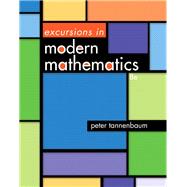ALERT: Before you purchase, check with your instructor or review your course syllabus to ensure that you select the correct ISBN. Several versions of Pearson's MyLab & Mastering products exist for each title, including customized versions for individual schools, and registrations are not transferable. In addition, you may need a CourseID, provided by your instructor, to register for and use Pearson's MyLab & Mastering products.
Packages
Access codes for Pearson's MyLab & Mastering products may not be included when purchasing or renting from companies other than Pearson; check with the seller before completing your purchase.
Used or rental books
If you rent or purchase a used book with an access code, the access code may have been redeemed previously and you may have to purchase a new access code.
Access codes
Access codes that are purchased from sellers other than Pearson carry a higher risk of being either the wrong ISBN or a previously redeemed code. Check with the seller prior to purchase.
--
Excursions in Modern Mathematics introduces you to the power of math by exploring applications like social choice and management science, showing that math is more than a set of formulas. Ideal for an applied liberal arts math course, Tannenbaum’s text is known for its clear, accessible writing style and its unique exercise sets that build in complexity from basic to more challenging. The Eighth Edition offers more real data and applications to connect with today’s readesr, expanded coverage of applications like growth, and revised exercise sets.







